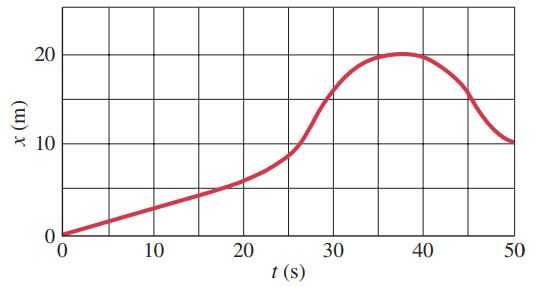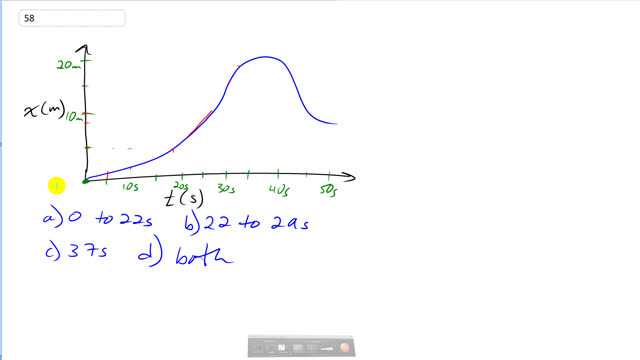
- during what time periods, if any, is the velocity constant?
- At what time is the velocity greatest?
- At what time, if any, is the velocity zero?
- Does the object move in one direction or in both directions during the time shown?

- 0 to 22s
- 22 to 29s
- 37s
- both

In order to watch this solution you need to have a subscription.
This is Giancoli Answers with Mr. Dychko. On this position-time graph, the periods of time when velocity is constant is when the slope of this graph is constant and the slope it looks like it's about constant here— slope of a position-time graph is velocity. So from about 0 to 22 seconds roughly, the slope is approximately constant and so there at that time the velocity's constant. At what time is the velocity greatest well, that's when we have the largest magnitude, well I guess since it's strictly asking what time when is the velocity greatest that's the largest positive slope is the question then and that's between about 22 to 29; it's debatable whether the speed is greater here but it's that's a negative velocity and so the greatest velocity would definitely be here then between about 22 and 29 seconds. There's one brief moment when the velocity is zero and that's here at the peak and it's just about to change its direction there and its velocity is gonna be negative going forward past about 37 seconds and whereas it's positive leading up to 37 seconds and so that also answers part (d), it moves in both directions; moves to the right if you assume right is positive here up to 37 seconds and then it moves to the left because it has negative slope beyond 37 seconds.